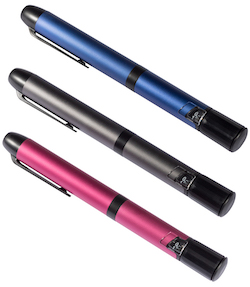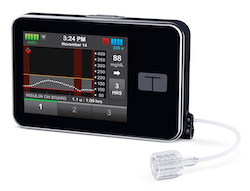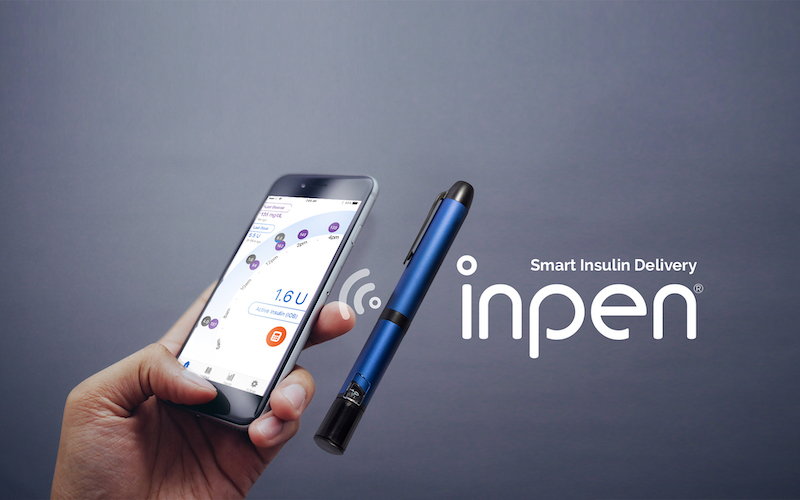By Scott Jung
According to the Centers for Disease Control and Prevention, over 30 million people in the United States live with diabetes. It’s a disease that affects both men and women of all ethnic backgrounds. People with diabetes have a higher risk of serious health complications, such as blindness, kidney failure, heart disease, and stroke. Consequently, the costs of medical expenses and lost wages for people with diabetes are enormous, totaling $327 billion every year. And, as the seventh leading cause of death, diabetes is a disease that quite literally steals both the lives and livelihoods of its victims.
There are two predominant forms of diabetes. Type 1 diabetes occurs when your body is unable to produce insulin, a hormone that plays a vital role in pushing glucose (sugar) from your blood to other parts of the body. Type 1 diabetes tends to occur more commonly at a young age and is not preventable. With type 2 diabetes, your body develops insulin resistance, which means it has a decreased ability to use insulin properly to regulate blood sugar levels. Type 2 diabetes can occur later in life due to genetics, or often as a result of an unhealthy lifestyle.
Thankfully, new technologies are making both types of diabetes easier to manage and less expensive to treat for both patients and medical professionals. “Diabetes is arguably the chronic condition most ripe for technological disruption,” says Dr. David Ahn, Endocrinologist and Program Director at the Mary and Dick Allen Diabetes Center in Newport Beach, California. “We are in the beginning part of a new renaissance in diabetes management.”
Ahn says that part of what makes diabetes tech so intriguing is that it is increasingly playing a role in all three stages of the disease: prevention for those who are at-risk, management for diabetics, and the quest for a cure.
1. Preventing Diabetes
Type 2 diabetes is the more common form of the disease, occurring in more than 90 percent of diabetics. Most often, it develops in adults over age 45, but it’s sadly becoming more common in children and teens. Because it’s the kind of diabetes that is often linked to obesity and lack of exercise, type 2 diabetes can be prevented with proper lifestyle changes.
People are also decreasing their risk of type 2 diabetes with a little help from technology. Big data and predictive analytics are helping healthcare providers identify patients who are at-risk for developing type 2 diabetes based on their health history. Web-based and mobile apps can then help these at-risk patients make lifestyle changes to slow or eliminate the progression of the disease.
When it comes to diabetes prevention, Ahn says, “motivating and enabling people to embrace healthy living now can prevent costly complications down the line.” San Francisco-based Omada and New York City-based Noom are two companies that have developed “digital therapeutics,” programs that assist with the prevention of diabetes through nutrition, weight loss, and life change coaching. Both have been effective: Omada has been clinically proven to decrease the 5-year risk of type 2 diabetes by 30 percent, and 78 percent of Noom users have sustained weight loss longer than one year. It’s the hope that these digital therapeutics will stop the development of diabetes of some of the 84 million Americans with prediabetes and the countless more who are at risk.
2. Diabetes Management
For those who have type 1 diabetes, a continuous glucose monitor (CGM) is the high-tech gadget for keeping their blood sugar levels in check. A CGM is a device that consists of an adhesive patch containing a tiny sensor that monitors the amount of glucose in the fluid just underneath the skin. As a result, diabetics only have to prick their finger to calibrate the sensor instead of many times a day.
As technology has advanced over the years, CGMs as a whole have become more affordable and are widely available even to type 2 diabetics. The most advanced CGMs are not only smaller and more comfortable to use, but they also have built-in wireless functionality to send glucose readings to a mobile device for a physician or caregiver to monitor. Arguably the biggest benefit for diabetics, however, is that some of the newest CGMs no longer require calibration finger sticks, virtually eliminating the need to prick your finger.

Once diabetics have determined that their blood glucose is high, technology can also help with necessary insulin delivery. One recently-approved delivery device is San Diego-based Companion Medical’s “InPen.” It’s a traditional-looking, reusable insulin pen with Bluetooth technology and a smartphone app that helps calculate and record the next insulin dose. The app not only calculates insulin dose recommendations based on previous insulin doses, current blood glucose levels, and carbohydrate intake values entered in manually, but it can also import glucose readings and automatically calculate the recommended dose from any wireless glucose monitor that can connect to Apple Health.
Beyond CGMs and insulin delivery devices, diabetes tech is rapidly advancing toward a fully closed-loop “bionic pancreas”. Just like the real organ, a bionic pancreas is able to continuously monitor a person’s blood glucose levels, and if insulin is needed, automatically calculate and deliver the proper dose. One of the early pioneers of the bionic pancreas is health advocate Dana Lewis, who originally conceived the “Do-It-Yourself Pancreas System” after growing frustrated with her CGM manufacturer’s disinterest in simply making her device’s alarms louder. Though her system consists basically of hacked-together CGM and insulin pump components and custom software, other companies are developing more refined systems.
Another interesting tech-friendly option is to sell your unused diabetic supplies online at Diabetic Exchange USA.

Massachusetts-based Beta Bionics is developing the “iLet” bionic pancreas system that can allow diabetics to go up to three days without worrying about what they eat or the insulin dosages they need to take. And insulin pump manufacturers Tandem Diabetes and Medtronic both have devices that can interact with CGMs to provide partially-automated insulin delivery.
Related: The Future of Diabetes Tech with Dr. Kupper Wintergerst
3. The Quest for a Cure for Diabetes
As with all chronic diseases, the holy grail of diabetes tech is a permanent cure. Ahn hopes for a day when treatment of diabetes actually reverses the disease process. Researchers have tried many different approaches over the years to find a cure-all treatment. Danish pharmaceutical manufacturer Novo Nordisk is currently developing a therapy that would stop the body’s immune system from attacking beta cells; it’s thought that type 1 diabetes is caused by the autoimmune destruction of these insulin-producing beta cells. And most recently, a small, but controversial study was conducted to test if a vaccine originally intended to treat tuberculosis could be effective against type 1 diabetes.
But what makes a cure so difficult to find is that the disease itself is still not well understood. “For both types of diabetes,” Ahn says, “there is ongoing research to better understand what causes diabetes at the molecular level to better identify targets for therapy.”
The type of therapy that may show the most promise currently is stem cells. “Stem cell treatments offer the potential for a true ‘cure’ to type 1 diabetes by recreating pancreatic tissue,” Ahn explains. ViaCyte is one company doing compelling work in this area of regenerative medicine. One of their products, “PEC-Encap,” is a device implanted underneath the skin. It contains stem cells that will mature and produce the insulin that diabetics lack. While the technology is still early in development, mice studies have yielded promising results, and the device is currently undergoing trials on human subjects.
Optimism for the Future
Diabetes tech has come a long way since the days of pricking fingers with lancets, inserting test strips into glucometers, and injecting a precise amount of insulin into your abdomen several times a day. Yet, the prevalence of and costs associated with diabetes continue to increase every year; according to the CDC, the number of adults diagnosed with diabetes has more than tripled as over the last 20 years as the American population has aged and become more overweight.
But despite the formidable challenges that have yet to be overcome in the quest for a cure for diabetes, Ahn is optimistic about the future and is already encouraged by the new ways that diabetics are able to manage the disease. “Better, cheaper, and smaller continuous glucose monitoring options enable people to keep track of their blood sugar without finger sticks. Telehealth and remote data management is scaling access to medical care, and fully automated insulin delivery is right around the corner,” he says. “The way diabetes is managed will be radically different in 2020 than it was in 2018.”










